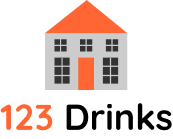Introduction
Tree felling is a necessary and often complex task in South Africa, driven by various needs such as urban development, property maintenance, and conservation efforts. When considering tree felling services, it’s essential to understand the factors that influence the pricing structure. In this article, we will delve into the components that make up the true cost behind the quote for tree felling services in South Africa.
Tree Size and Complexity
One of the primary factors that significantly impact tree felling prices is the size and complexity of the tree in question. Larger trees with extensive branches and intricate growth patterns require more time, labor, and specialized equipment to safely and effectively remove. As a result, you can expect higher quotes for the felling of substantial or complicated trees. Additionally, factors like the tree’s proximity to structures and power lines can further increase the complexity of the job, affecting the final cost.
Tree Health and Condition
The health and condition of the tree play a vital role in determining the cost of tree felling. Diseased, decaying, or dead trees can be more dangerous to work with, as they may be prone to unexpected collapses. As a result, the removal of such trees often requires more caution and expertise, which can drive up the price. Conversely, healthy trees that pose no immediate safety concerns are typically less expensive to remove.
Location and Accessibility
The location of the tree on your property can also influence the pricing. Trees situated in hard-to-reach areas, such as densely populated urban environments or remote rural locations, may require specialized equipment or extra effort to access. This additional complexity can lead to higher tree felling prices. Accessibility issues can also impact the disposal of tree debris, as it may be more challenging to transport materials from the removal site.
Environmental Regulations
South Africa has stringent environmental regulations aimed at protecting indigenous and endangered tree species. Compliance with these regulations can impact the cost of tree felling, especially if the tree in question falls within a protected category. Arborists and tree felling companies must adhere to these regulations, which may require additional permits or mitigation measures, adding to the overall cost.
Equipment and Safety Measures
Tree felling requires specialized equipment and safety measures to ensure the job is completed efficiently and without accidents. The cost of renting or maintaining this equipment, along with the expenses associated with safety gear and training for personnel, is often factored into the final quote. Companies that prioritize safety may charge slightly higher prices to cover these essential elements.
Market Competition
The level of competition within the tree felling industry can influence pricing. In areas with many tree felling service providers, competition may lead to more competitive rates. Conversely, in regions with fewer options, companies may charge higher prices. Consumers should obtain multiple quotes to compare pricing and services to ensure they are receiving a fair estimate. Learn more
Conclusion
The cost of tree felling in South Africa is influenced by a combination of factors, including the size and complexity of the tree, its health and condition, location and accessibility, environmental regulations, equipment and safety measures, and market competition. Understanding these elements can help property owners make informed decisions when seeking tree felling services. By carefully evaluating quotes and considering the specific requirements of their tree removal project, individuals can better determine the true cost behind the quote and ensure they receive quality service at a reasonable price.

